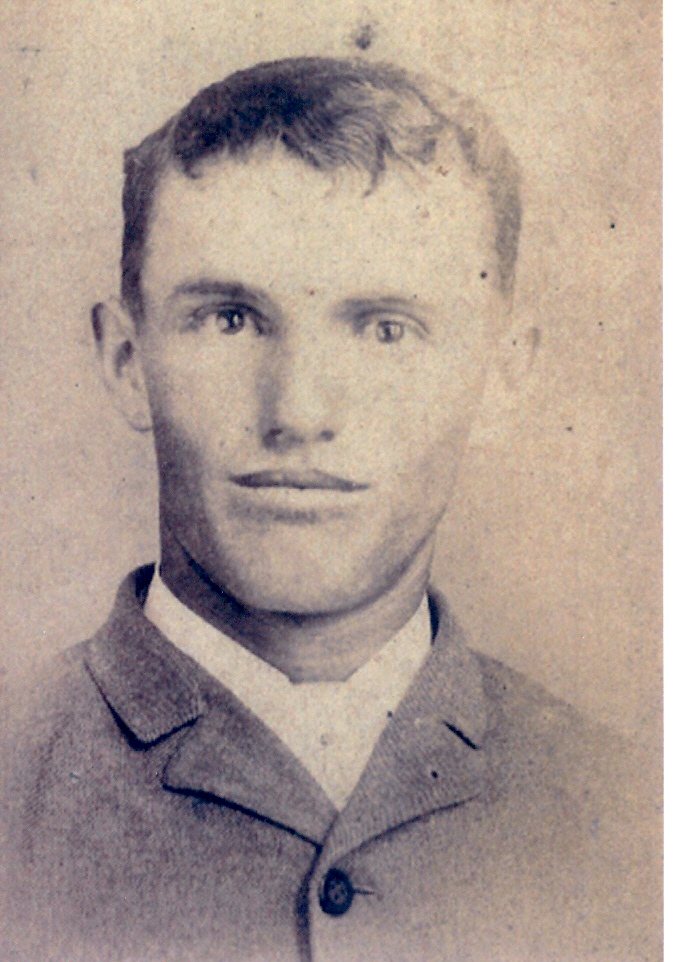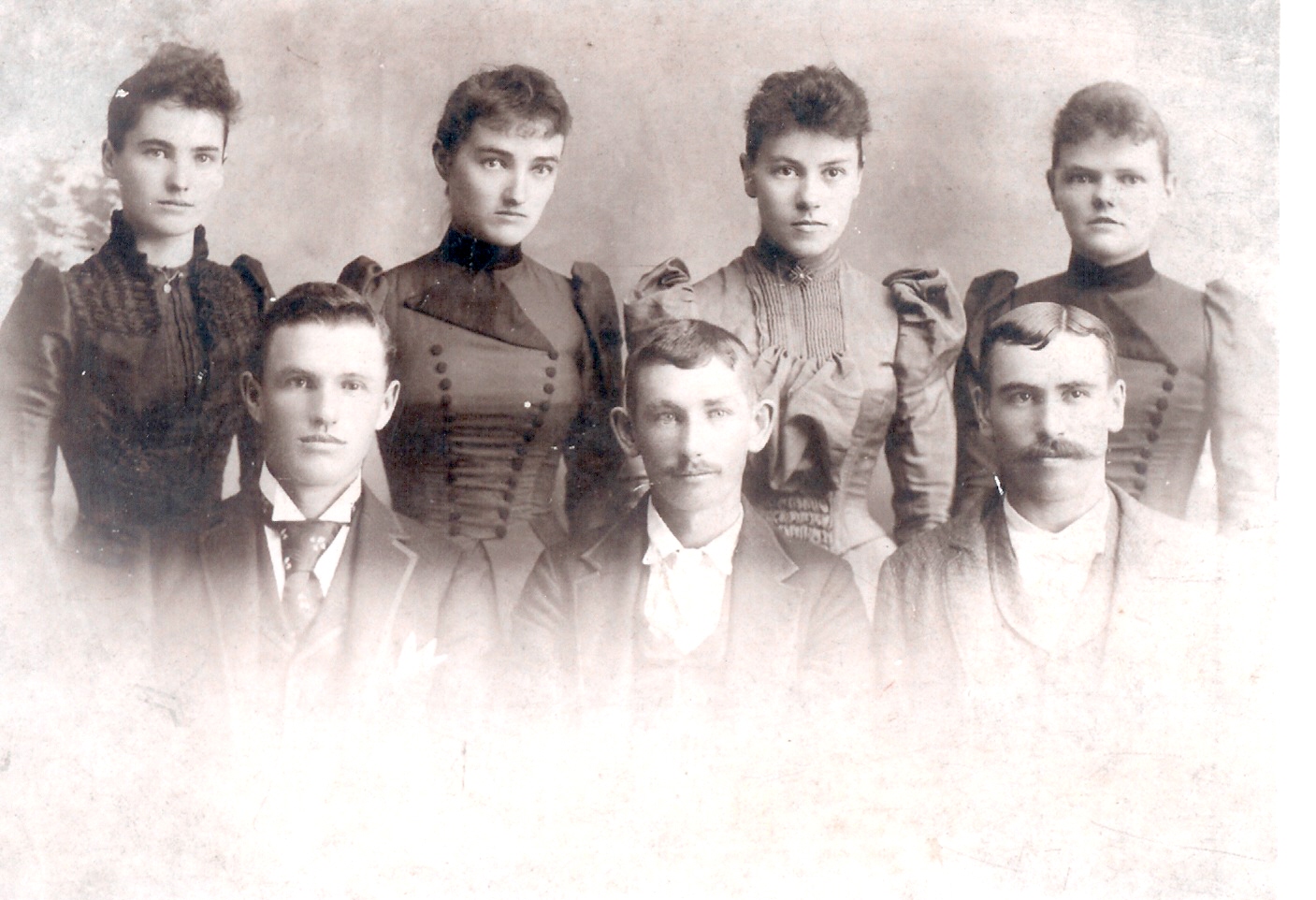Bl3 Thomas Eugene Bland
Dr. Thomas Eugene Bland was the son of Thomas Pope Bland (Bl4) and Levicy Jane Harris (Ha4).| He was born July 13, 1864 near Bagdad Shelby Co., Ky.
He married Matilda Prather Nicholas (Ni3) on June 20, 1906, in the presence of Rev. Worden Nicholas (Ni3-4), Patrick Pope Nicholas (Ni3-7), George Nicholas (Ni3-5), Lawrence Nicholas (Ni3-9). He died in Nov 1943. They had two children: Bl2 Anna Pope Bland was born June 26, 1908, in Shelbyville, Ky. Bl2-2 Levicy Jane Bland, the second daughter was born August 28, 1910, and died in February 1985 unmarried and without issue and was buried in Shelbyville next to her parents. Thomas received his undergraduate degree from Georgetown College that had been founded as a Baptist denominational school in 1830. He then went o to receive his medical degree from the University of Louisville 1892. As a doctor practicing medicine in Shelbyville he had despaired at seeing countless children die of typhoid and diphtheria every year when heavy rains clogged the sewar system bringing everything up onto the streets, which caused an annual epidemic. So he went up for election to the town council and became Mayor of Shelbyville, Ky., 1902-04, to force a bond bill through the town counsel to improve the city sewage system. |

picture taken about 1884
|
|
| The following letter by his colleagues and contempories
best sums up his importantnce for his community:
"SHELBY COUNTY MEDICAL SOCIETY Shelbyville, Ky. December 4th, l943 Mrs. T. E. Bland
Dear Mrs. Bland -
SHELBY COUNTY MEDICAL SOCIETY
The grim reaper, death, has again entered our ranks and taken one of
our oldest and most esteemed useful members in the person of Doctor Thomas
Eugene Bland.
|

Picture taken about 1905/06 of Matilda Prather Nicholas on the right, It is presumably Thomas E. Bland center who seems to be teasing his fiancée, Matilda Nicholas, with some remark about or to her DAR friend on the left.
Patricia March's grandfather, William
Squire Bland, managed the Nicholas farm after Matilda Nicholas moved
into Shelbyville (probably on their wedding night), until he was hit by
a train on the way home to Harrington Mill Road. As Patricia reports:
"This was about 1916. The mule and the milk wagon was destroyed.
And almost Grandpa Sig had it not been for your Dr. Eugene. There
was a whole in Grandpa's head and Dr. Bland put a metal plate over the
hole and sewed in place. It is amazing Grandpa survived. He
had a long recovery but was finally able to farm and milk his beloved
cows." Patricia's father, Nelson, and her grandmother were able to
keep the new farm in Clark Station going until he could walk in a straight
line and function. Her aunts, Martha Eugene (named for your grandfather)
and Nancy Virginia had finished high school and were married by this time."
Back Row Left to Right: Martha Bland, Lou Ellen Bland (Sleadd), Mary
Beatrice Bland (Busey), and Sarah/Sallie Bland (Sanford).
|
|
| Picture taken Mar. 1985 of the house built by Dr. Thomas Eugene Bland
about 1903. A second floor was added shortly after his marriage in 1906.
From left to right: Dr. William Griffith Hester, Jane Ann Hester Latty (now Thomas) and George Nicholas Hester. As reported by Leland Bland in 1985, Thomas Bland's grandparents moved to Missouri after emigrating from Virginia (that would be from Fauquire Co., Va. to Garrard County, Kentucky, with gr. grandparents, Charles Bland and Phyllis Ann Pope (Po6)) together with the Truman family, who had first settled on a farm near Bagdad which was between the Harris house and the Bland house on the road from Bagdad to Shelbyville. By uncanny coincidence the Bland house looks almost identical to the the birth house of President Harry Truman, for about 1840 the grandparents of Thomas Eugene Bland went West with his parents'neighbors, Harry Trumans grandparents, to settle in Missouri. But they died shortly afterwards and their son, Thomas Pope Bland, was returned to Bagdad to be brought up by the great grandparents. Both houses were built about the same time by men who never met, but whose grandparents had been long time good neighbors and migrated together from Kentucky to Missouri. The coincidence is to be explained in part by the prevailing architectural style of the the 1890's. But the same layout of a porch swung around the left front corner is really surprising.f Thomas Pope Bland and Levicy Jane Harris (Ha4), whose families settled near Bagdad |
The four grandchildren of Thomas Eugene Bland: William, Jane, Thomas and George Hester |
|

|
||
 |
||
Unidentified pictures taken February 1921
This seems to be a picture of Dr. Thomas Eugene, his mother, Levicy
Jane Harris Bland and one of his sisters, either Sarah or Martha Bland.
Below is a different view of the same house.
If this was the house of Thomas Pope Bland, then this side of the house
faced out on a 50 yard drive between two rows of Elms that were still there
in 1985, although the house had been replaced. Unusual about the style
of the house are the floor to ceiling high windows, which must have made
the rooms very bright.
return to index
